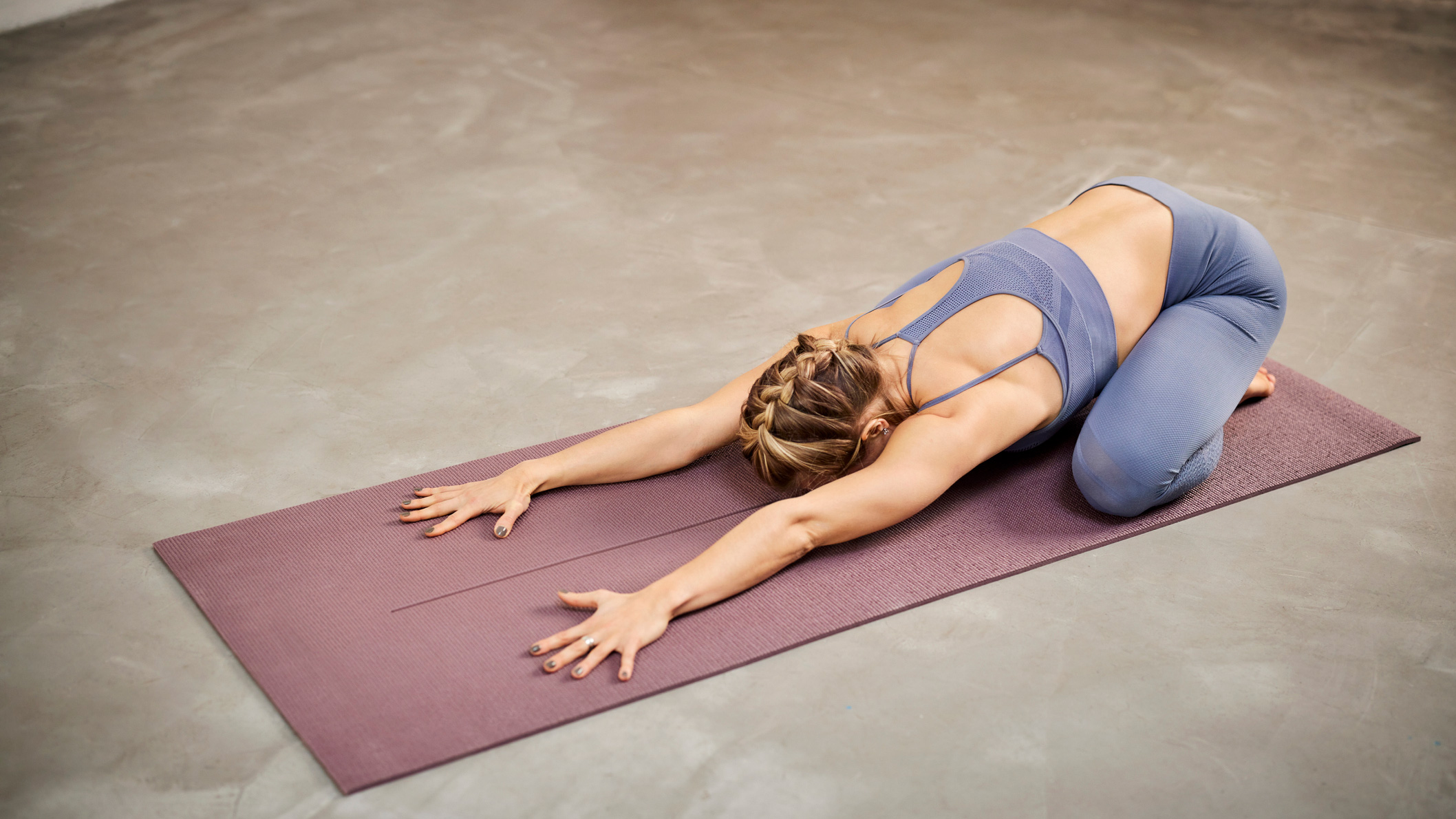These four step-by-step yoga moves will improve flexibility in your back
Back pain? This four-move yoga routine from boutique London studio Indaba is designed to improve flexibility in your back


It's no secret that we could all probably benefit from a spot of yoga. As well as increasing our flexibility, yoga's great for both mind and body, incorporating mindfulness and meditation-style breathing into a great core workout, as we struggle to hold some of those difficult poses and go through relaxing stretches.
Spending time on the best yoga mats, with yoga's emphasis on flexibility and trunk strength, means it's great news for our lower backs. Even if we use the best posture correctors or sit on ergonomic office chairs, back pain is surprisingly common. Fortunately, yoga has been proven to be able to help: research from the National Institute of Health found yoga can ease moderate to severe chronic lower-back pain.
The researchers found yoga was "as effective as standard physical therapy" if practiced weekly over 12 weeks. Of course, yoga can also prevent the development of lower-back pain with regular flexibility practice, which is where this four-move workout comes in.
Designed by yoga teacher Rebecca Hannah, below we've got four step-by-step yoga movements specifically designed to improve flexibility in your back.

Rebecca Hannah is a yoga teacher with experience in Vinyasa, Hatha, Ashtanga, Rocket Yoga, and more. She has taught back bending masterclasses at boutique London studio Indaba Yoga, and designed, filmed and even narrates the four-move sequence below.
Yoga pose: Backbend with blocks
- Take two yoga blocks on either a low, medium or high height. One block supports the back of the head and the other block goes between the scapula.
- Sit your bum down and lift the arms up and overhead.
- Place the hands on the thighs and push the hips up towards the sky.
Yoga pose: Cat-Cow Waves
- Starting off in a Child's Pose, resting your bum on the soles of your feet, move your body up so you're on all fours.
- Round your spine, and tilt yourself forward.
- Arch your back and glide yourself all the way backwards, using hands gripping with the fingertips to support yourself.
Yoga Pose: Puppy Pose
- Start on all fours. Walk your arms forward, sending your hips back over your knees.
- Press your chest down. If you would like to deepen this, you can elevate your wrists on top of blocks.
- Keeping the gaze forward, try and "wrap" your armpits into your chest cavity.
Yoga Pose: Modified Child's Pose
- Starting in a Child's Pose, take your arms forward and point your thumbs up, keeping your forehead on the ground.
- Try to lift one arm up and extend it out to the side, resting your arm on a yoga block, without lifting the forehead off the ground.
- If this feels easy on a low height, you can take the blocks up to a higher height.
What to do next?
A supple back is a strong back. Once you've practiced these four moves, you might want to try some weight lifting, as demonstrated in our guides on deadlifts with dumbbells and pull-ups, two moves designed to build muscle in your back. Developing lean skeletal muscle can help reduce pain further, according to research.
Alternatively, you can continue your burgeoning yoga practice with routines such as this 10-minute yoga flow to relieve muscle tension.
Start your week with achievable workout ideas, health tips and wellbeing advice in your inbox.
Matt Evans is an experienced health and fitness journalist and is currently Fitness and Wellbeing Editor at TechRadar, covering all things exercise and nutrition on Fit&Well's tech-focused sister site. Matt originally discovered exercise through martial arts: he holds a black belt in Karate and remains a keen runner, gym-goer, and infrequent yogi. His top fitness tip? Stretch.
